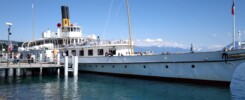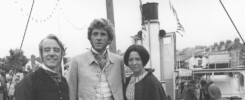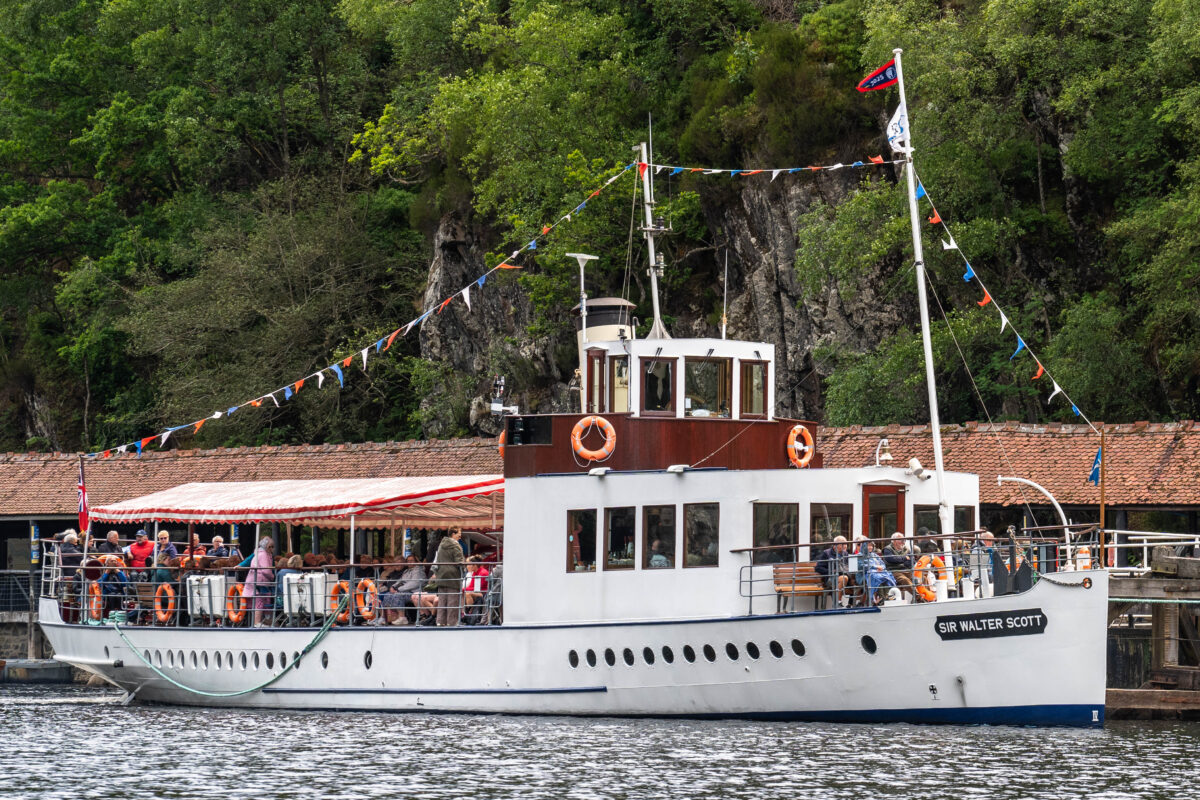
On the evening of Saturday 7th June 130 guests, including local dignitaries and many others who have supported the ship in recent years, were aboard for the presentation of the National Historic Ships UK Flagship 2025 Pennant to the 1900 Loch Katrine passenger steamship Sir Walter Scott.
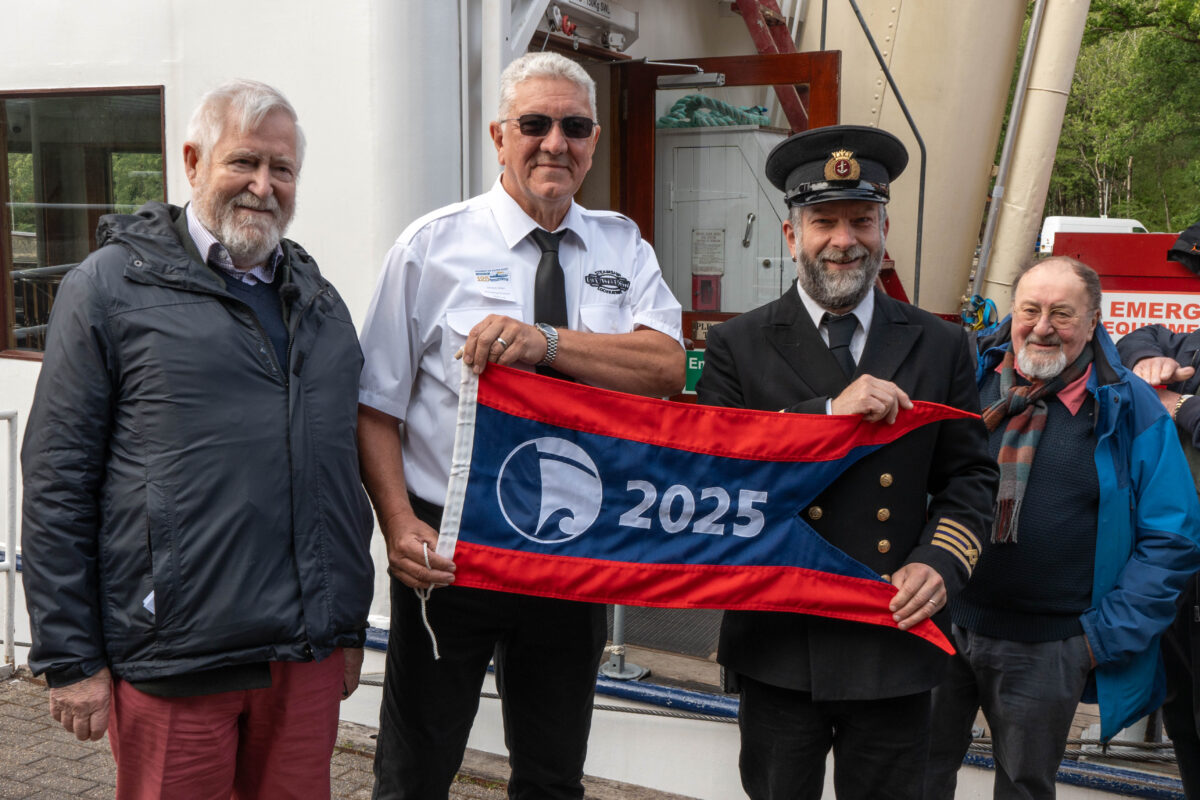
Guests were welcomed aboard by Lead Trustee James Fraser. On behalf of National Historic Ships John Megoran then said a few words before presenting the Flagship pennant to Gordon Allan, General Manager and Captain and Ken Henderson, Chief Engineer and Captain.
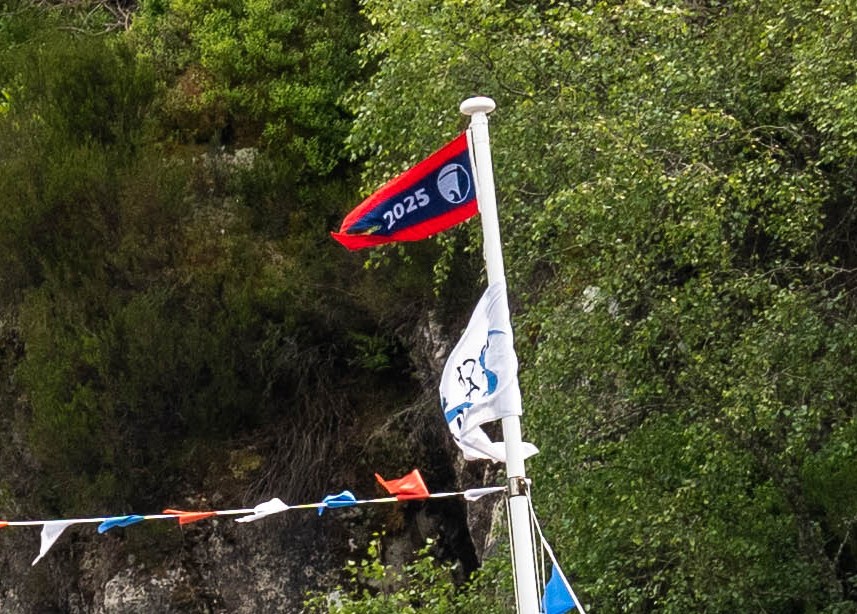
The flag was then hoisted amidst much blowing of the ship’s steam whistle. This was followed by a speech from Professor Paul Jowitt, Chair of the Trust, thanking key individuals for their contributions over the years after which Sir Walter Scott set off for a cruise down the loch to Stronaclachar during which a delicious buffet was served as well as complimentary drinks from the bar.
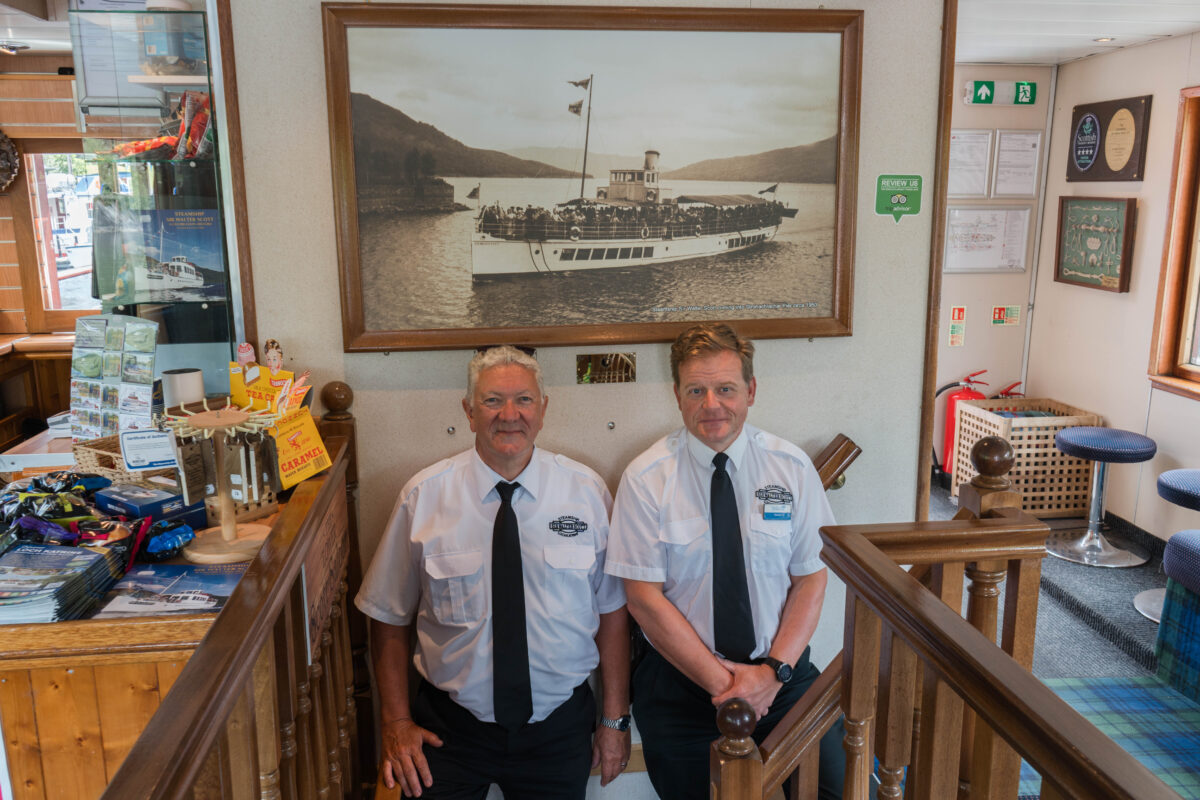
Although the weather forecast was not great it turned out to be a sunny, lovely and convivial evening.
The Flagship Award is in celebration of Sir Walter Scott’s 125th anniversary by hosting a Steamboat Festival with accompanying promotional activity in addition to Christmas events and three sailings per day from March to October.
The three other NHS-UK Flagships 2025 include:
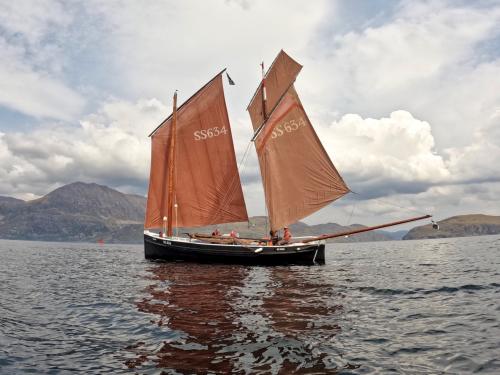
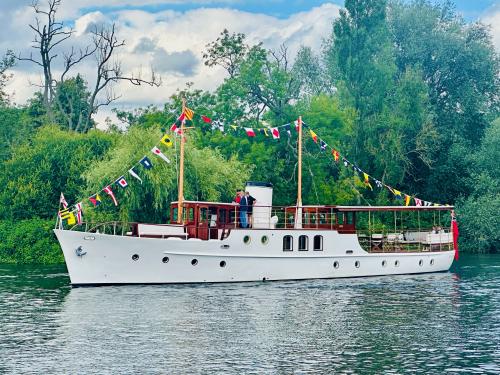
and:
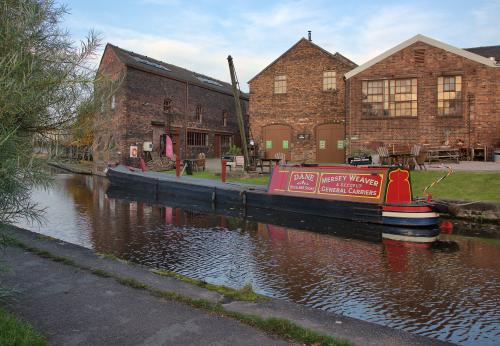
National Historic Ships UK is a government funded, independent organisation which gives objective advice to UK governments and local authorities, funding bodies, and the historic ships sector on all matters relating to historic vessels in the UK.
National Historic Ships UK carries a wide remit looking not only at the immediate issues concerning historic vessels in the UK, but also addressing questions relating to the support infrastructure for historic ships, their potential for contributing in the wider economic, social and community context, and maintaining a watch list of vessels abroad with potential UK significance.
National Historic Ships UK maintains The National Register of Historic Vessels (NRHV). There are currently some 1,500 vessels on the National Register of Historic Vessels. The database includes details of designer, builder, dimensions, construction, propulsion, service history, current location and ownership, as well as images of many of the vessels.
The Register provides an overview of the UK’s extant historic vessels and can be used to identify and prioritise significant vessels that should be conserved, provide guidance to decision-makers on the allocation of funding, and give an early warning of ships ‘at risk’. The database can also be a useful research tool, although confidential information about ownership is always kept secure.
Over 57% of historic vessels recorded on the NRHV are either privately owned or commercially operated. Museums and charitable trusts account for 14% of the total.
The National Register of Historic Vessels contains a sub-group of vessels – The National Historic Fleet which are distinguished by:
- being of pre-eminent national or regional significance
- spanning the spectrum of UK maritime history
- illustrating changes in construction and technology
- meriting a higher priority for long term conservation.
There are currently 200 vessels in the National Historic Fleet and these may include vessels from the National Small Boat Register (run by the National Maritime Museum Cornwall) which are a minimum of 50 years and which fit the above criteria. The composition of the National Historic Fleet is reviewed on a regular basis.
The Overseas Watch List consists of vessels of UK significance abroad including significant vessels which were built and operated in this country and then sold abroad. Being outside the UK they do not qualify for registration but holding information on these and similar vessels is important as we are often consulted on them.
OWL also includes vessels previously registered on the NRHV which have now migrated abroad or have left the UK for a period of more than three consecutive months. Owners should let us know of any relocation of this kind so we can amend the status accordingly.
(Vessels on the OWL which have previously been registered on the NRHV vessels on OWL are entitled to fly our House Flags and Defaced Ensigns.)
The National Archive of Historic Vessels contains details of over 700 vessels previously on the NRHV which have now been broken up or lost, sunk, or whose owners have been out of contact for a considerable period. The NAHV also contains details of some vessels which do not fit the NRHV criteria (in particular the age criterion) but which nevertheless have the potential of joining the NRHV at a later date because of exceptional historical significance.
The UK Replica List has been set up by National Historic Ships UK to provide an overview of all replica vessels which have been built in the UK or abroad to a UK design. This List is entirely independent of the National Register of Historic Vessels but is intended to identify replica craft for the purposes of research, public interest, filming or charters and to promote the traditional skills involved in building and sailing these vessels.
The National Small Boats Register: If you are looking for a vessel which is 33ft and under in length – perhaps a small yacht, local boat or a dinghy – it will only be listed on the National Register of Historic Vessels if it is part of the National Historic Fleet. However, the National Maritime Museum Cornwall maintains the National Small Boat Register. This database already contains the details of nearly 700 small craft, but is continuing to develop and grow and actively seeks suggestions for new vessels to be added.
For more information about National Historic ships UK check out their website: www.nationalhistoricships.org.uk.
Kingswear Castle returned to service in 2023 after the first part of a major rebuild which is designed to set her up for the next 25 years running on the River Dart. The Paddle Steamer Kingswear Castle Trust is now fund raising for the second phase of the rebuild. You can read more about the rebuilds and how you can help if you can here.
John Megoran

